Before introducing the 5 best tourist spot of Tarlac, let us give you a brief introduction of Tarlac.
Tarlac was initially component of provinces Pampanga as well as Pangasinan. It was the final Central Luzon province to be formed by the Spanish administration in 1874. In the Philippine Revolution of 1896, Tarlac was among the eight first provinces that fought in the fight against Spain.
The city has a vibrant economy that is driven by industries such as agriculture, manufacturing, and services. Tarlac City is known for its production of rice, sugarcane, and other crops, as well as its manufacturing of textiles, furniture, and other products.
In terms of education, Tarlac City is home to several reputable schools and universities, including the Tarlac State University, the Don Bosco Technical Institute, and the Tarlac Montessori School.
Overall, Tarlac City offers a unique blend of historical and cultural attractions, natural beauty, and economic opportunities. Whether you’re looking to explore the city’s rich heritage, enjoy the great outdoors, or pursue business or educational opportunities, Tarlac City has something to offer.
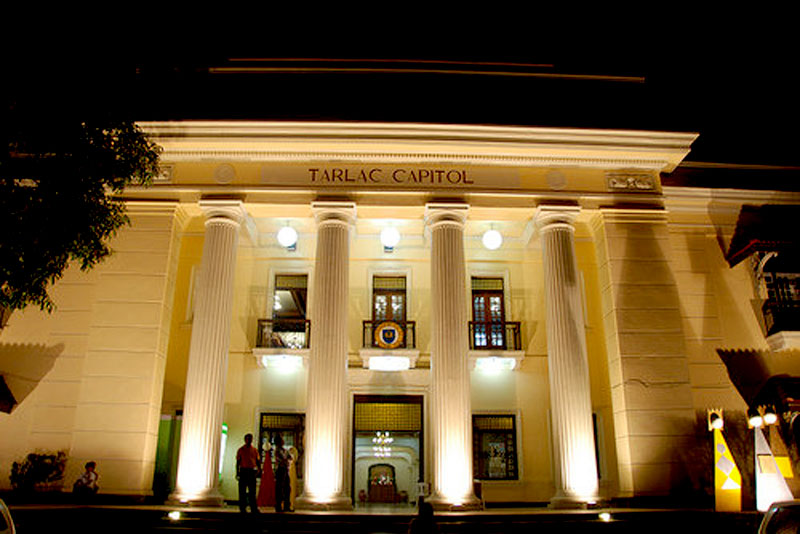
Want to know why Tarlac is called “The melting pot of the Philippines“?
Tarlac City is known as the “Melting Pot of the Philippines” because of its diverse population, which includes people from different ethnic groups and regions of the country. The city is home to various indigenous groups such as the Aetas, Ilocanos, Kapampangans, Pangasinenses, and Tagalogs, among others.
5 best treasure places of Tarlac
1. Monasterio de Tarlac- Tarlac tourist spot
Monasterio de Tarlac– a Catholic monastery located on Mount Resurrection in the province of Tarlac, Philippines. The monastery is situated on a hill, approximately 1,000 feet above sea level, and offers scenic views of the surrounding landscape.
The Monasterio de Tarlac was founded in 2000 by the late Filipino businessman and philanthropist Jose “Joey” Lina, Jr. as a way to honor his late wife, Gina de Venecia Lina, who was a devotee of the Our Lady of Lourdes.
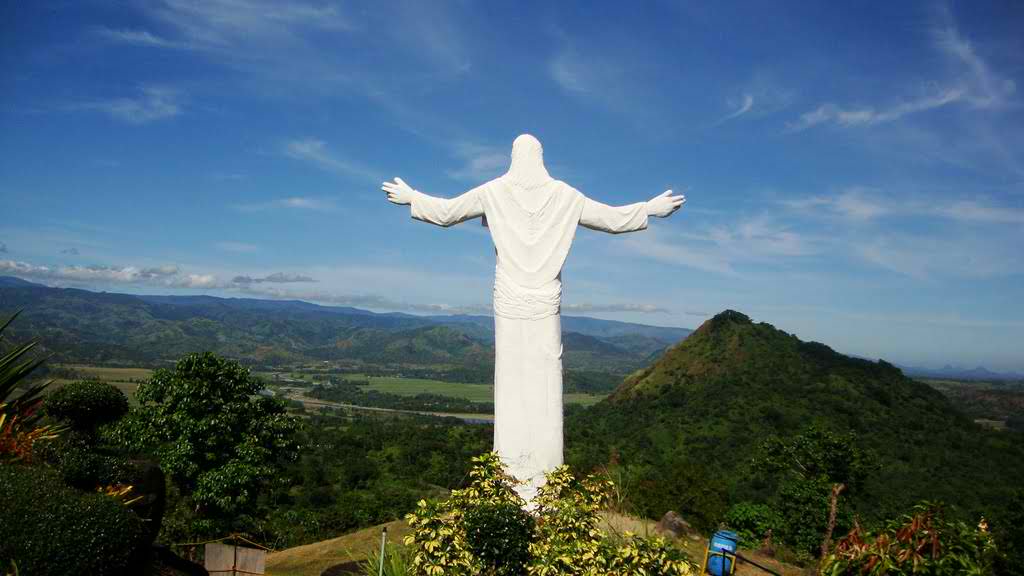
The monastery features a 30-foot statue of the Risen Christ, which stands atop the hill and overlooks the monastery. Visitors can climb the stairs to the base of the statue to enjoy the panoramic view of the surrounding countryside. The monastery also has a chapel where visitors can attend Mass and other religious services.
In addition to its religious significance, the Monasterio de Tarlac has become a popular tourist attraction in the province, drawing both local and foreign visitors. The peaceful and serene surroundings of the monastery make it an ideal place for prayer, reflection, and meditation.
Overall, the Monasterio de Tarlac is a unique and beautiful destination that offers visitors the opportunity to experience the natural beauty and spiritual heritage of the Philippines.
Here are some tips for how to get there:
- With a Private Vehicle: You are able to take a drive up to Monasterio de Tarlac using your vehicle of choice or a rental. From Manila you can take the North Luzon Expressway (NLEX) and leave at SCTEX Tarlac. Continue to drive toward Tarlac City and then follow the road markings that will take you to the monastery.
- By public transportation If you are coming from Manila you can take the bus that is bound towards Tarlac City. It is possible to take Victory Liner, Five Star or Baliwag Transit. When you reach Tarlac City, at the Tarlac City bus terminal, use a tricycle or jeepney that will take you towards San Jose. The driver should take you to the base of Mount Resurrection, where the Monasterio of Tarlac is situated.
- Through a tour package If you’re looking for an easy excursion, you can reserve an itinerary that includes transportation and a visit to the Monasterio of Tarlac. Make sure to check with your travel agency to find packages available.
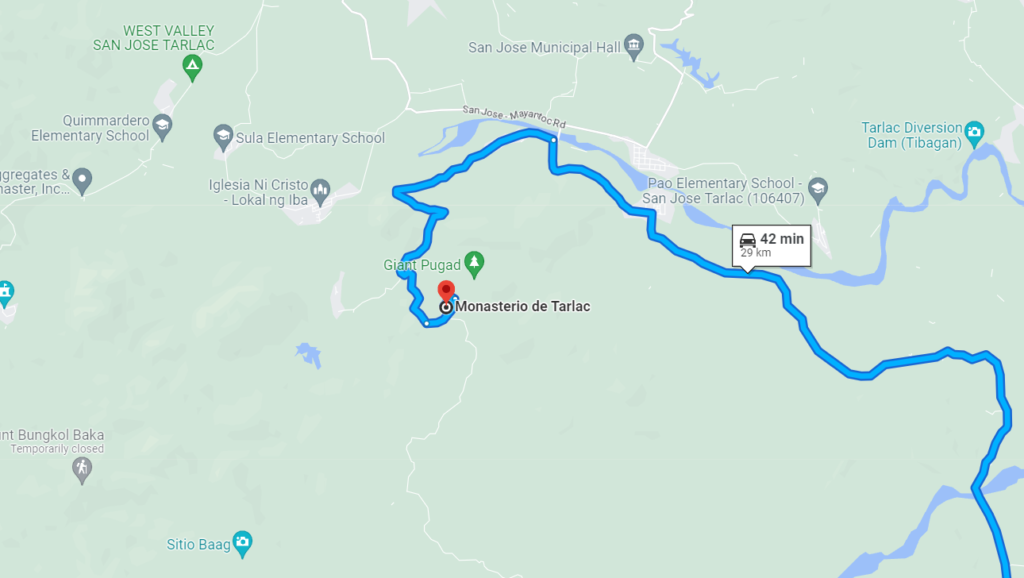
Reminder:
The Monasterio of Tarlac is open for visitors from 6:00 AM until 6:00 pm every day. Admission is free, however donations are accepted.
2. Mt. Pinatubo- Tarlac tourist spot
Mt. Pinatubo is an active volcano in the tropical island Luzon located in Luzon in the Philippines located at the border between the provinces Zambales, Tarlac, and Pampanga. Ancestral Pinatubo was an igneous stratovolcano composed from andesite and dacite. Prior to 1991 the mountain was obscure and was heavily degraded. It was covered with dense forests that housed a large number of a few thousand indigenous people, called the Aeta who moved into the mountain ranges from lowlands after it was the time that the Spanish defeated the Philippines in 1565.

The eruption of the volcano in June 1991, which was more than four hundred years since the previous eruption, caused the second-largest 3rd largest earth-wide eruption of the 20th century. Predicting the start in the event lead in the evacuation of hundreds of hundreds of thousands of residents from area, thereby saving many lives. However, as the area was severely affected by pyroclastic flows ash deposits, and then, lahars caused by rainwater that had remobilized older volcanic deposits, hundreds of homes were destroyed.
Here are some tips for how to get there:
- Private Car: If you have your own car or plan to rent one then you can travel from Manila to Mount Pinatubo from Manila. Follow the North Luzon Expressway (NLEX) and then the Subic Clark-Tarlac Expressway (SCTEX) to get to Capas, Tarlac. From there, follow the road signs towards the Pinatubo Tourism Center and arrange for the hike to the lake that is cratering. You’ll also have to rent a 4×4 vehicle for the trip to the point of departure for the trek.
- Public Transport: If you would prefer public transportation then you can catch the coach that runs from Manila up to Capas, Tarlac. There are several bus companies, including Victory Liner, Genesis Transport as well as Five Star Bus, operate every day trips to Capas. At the Capas bus station there is tricycles towards the Pinatubo Tourism Center to register for the trip. You can also lease an SUV from the Tourism Center to get to the point where you can jump off.
- The Tour Package is a great option if your goal is to have an easy experience then you should consider booking an itinerary that includes transport, guides permits, guides, and other charges. Many tour operators provide Mount Pinatubo trekking packages, and they are available on the internet or through travel agencies. The packages typically include pickup and drop-off from Manila or any other location that is designated and you do not have to think about transport arrangements. The guides on the tour are well-versed in the region and are able to provide information on the geology and history that surrounds Mount Pinatubo.

Reminder:
No matter what choice of mode of transportation be sure to prepare for the trip and keep track of conditions and volcanic activity updates. Make sure to bring the appropriate equipment and other supplies including hiking boots and raincoats, as well as snacks, water and sunblock. Going on a hike up to Mount Pinatubo is a popular sport, so expect crowds, particularly during holidays and weekends. But the stunning views of the lake that forms the crater is worth the effort. Be sure to adhere to the safety guidelines and respect the natural environment on your journey towards Mount Pinatubo.
3. Capas National Shrine- Tarlac tourist spot
Capas National Shrine, also called Capas Concentration Camp, also known as Capas Concentration Camp, is a national memorial located at Capas, Tarlac, Philippines. It was established to pay tribute to those thousands of Filipino as well as American soldiers who perished during the notorious Bataan Death March during World War II.
The shrine spans 54 hectares. It also includes the chapel, a museum along with numerous markers and monuments. The primary attraction to the site is its Memorial Wall, which features the names of the 36,000 Filipino and American soldiers who perished during the march to death.
The museum has the collection of artifacts and photographs, and other documents that tell the tale of the death marches and the soldiers who were afflicted by the Japanese occupation. The museum has exhibits that focus on the conflict as well as the Japanese occupation as well as its liberation in the Philippines. The museum also features an interactive presentation that offers an engaging and informative experience for the visitors.
It is a basic but elegant structure that is an opportunity for worship and reflection for the visitors. It is adorned with a massive cross as well as stained glass windows that show scenes of the death march as well as the conflict.

Capas National Shrine Capas National Shrine is a solemn memorial to the sacrifices of the soldiers who were fighting for freedom and democracy throughout World War II. It is an essential stop for those interested in Philippine heritage and culture. The shrine is accessible to the public as well as admission free.
Alongside its historic significance in addition to its historical significance, in addition to its historical significance, the Capas National Shrine is also an area that is a sanctuary of peace and beauty. The shrine is set in lush greenery, beautiful rolling hills and scenic landscapes, offering visitors a an ambiance of peace and calm.
Apart from The Memorial Wall, museum, and chapel, there are numerous other markers and monuments in the shrine which honor the soldiers who died and fought during the conflict. They are those of the Eternal Flame of Freedom, which represents the hope and determination for Filipinos, the Filipino people, as well as the Monument of Victory, which is a tribute to those who fought for the freedom from the Philippines.
It is also home to the Capas National Shrine also serves as a location for various commemorative ceremonies and events all through the year, including an regular Araw ng Kagitingan (Day of Valor) celebration that takes place on the 9th of April. The celebration is attended by officials from the government as well as police and military officers and other dignitaries as well as families and descendants of soldiers who participated during the war.
In the end all, it is clear that the Capas National Shrine is a location of significant historical, cultural, as well as natural significance. It gives visitors an unforgettable and memorable experience that honors the courage and sacrifices of combatants who sacrificed their lives for their nation’s independence and freedom.
Here are some tips for how to get there:
By Public Transportation:
- Find a bus that is bound to Capas and Tarlac City at Cubao or Pasay terminal.
- Alight at Capas Public Market or Capas Junction.
- Get a tricycle or jeepney heading towards Capas National Shrine.
By Private Vehicle:
- From Manila Take from Manila, take the North Luzon Expressway (NLEX) and take exit SCTEX Dau Toll Plaza.
- You can take Route MacArthur Highway going north towards Tarlac City.
- Right at Capas Junction.
- Take the road that leads towards Barangay Navy as well as Capas National Shrine.

Reminder:
The Capas National Shrine is open every day between 8:00 am and at 5pm. It is accessible to the public at the cost of admission. If you’re looking to attend this year’s Araw ng Kagitingan celebration on April 9 be prepared for packed and oppressive security measures.
4. Aquino Center and Museum- Tarlac tourist spot
Aquino Center and Museum is a museum located in Tarlac, Philippines that serves as a tribute to deceased senator Benigno “Ninoy” Aquino Jr. and the former the President Corazon “Cory” Aquino. The museum is situated at Hacienda Luisita, the Aquino family’s ancestral home. The museum has exhibits that focus on the life and work of Ninoy and Cory Aquino, as well as information on Philippine culture and history. It has a collection photographs, memorabilia and paintings that portray the triumphs and struggles that were the legacy of the Aquino family as well as the Philippine democratic movement.
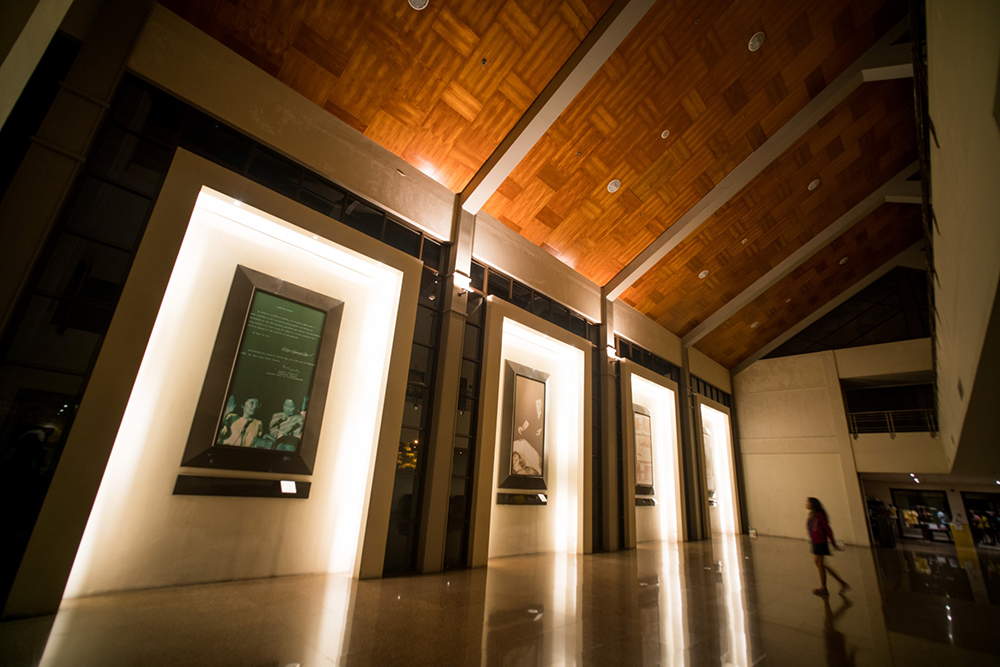
In addition to the exhibits, the museum houses a library, auditorium, as well as an souvenir shop. The museum offers educational programming including seminars, tours, and lectures which cater to students or scholars as well as tourists looking to find out more about Philippine historical and democratic process. The Aquino Center and Museum is more than an ode to the Aquino family, but it is also a symbol of that of the Filipino population’s fight for human rights and democracy. It’s a must-see place for those who want to know more about the Philippines its past, present and its future.
Here are some tips for how to get there:
By Public Transportation:
Find a bus that is bound for Tarlac City , or Cabanatuan City at Cubao or Pasay terminal.
Alight at Tarlac City Public Market or MacArthur Highway.
Get a jeepney or tricycle heading toward Luisita Industrial Park or Aquino Center and Museum.
By Private Vehicle:
From Manila Take Manila, take the North Luzon Expressway (NLEX) and exit at the SCTEX Tarlac Toll Plaza.
You can take your time on the MacArthur Highway going north towards Tarlac City.
Right to the Luisita Industrial Park gate.
Continue on the highway towards Aquino Center and Museum.

Aquino Center and Museum is open every day from 8:00 AM until 4:00 PM, except on holidays and Mondays. The admission fee varies based the kind of visitor with reduced rates for seniors and students. The museum also provides guided tours, as well as educational programs for visitors.
5. Haduan Falls- Tarlac tourist spot
Haduan Falls a popular tourist attraction within the Province of Tarlac located situated in the Central Luzon region of the Philippines. It is a stunning waterfall set among the hills, and surrounded by dense vegetation as well as majestic trees.
To reach Haduan Falls, visitors must traverse an impressive and difficult trail that requires traversing a river, and then hiking up a hill. The hike is approximately 2 hours and is physically challenging however, the breathtaking views and the refreshing waterfalls make it worth the effort.
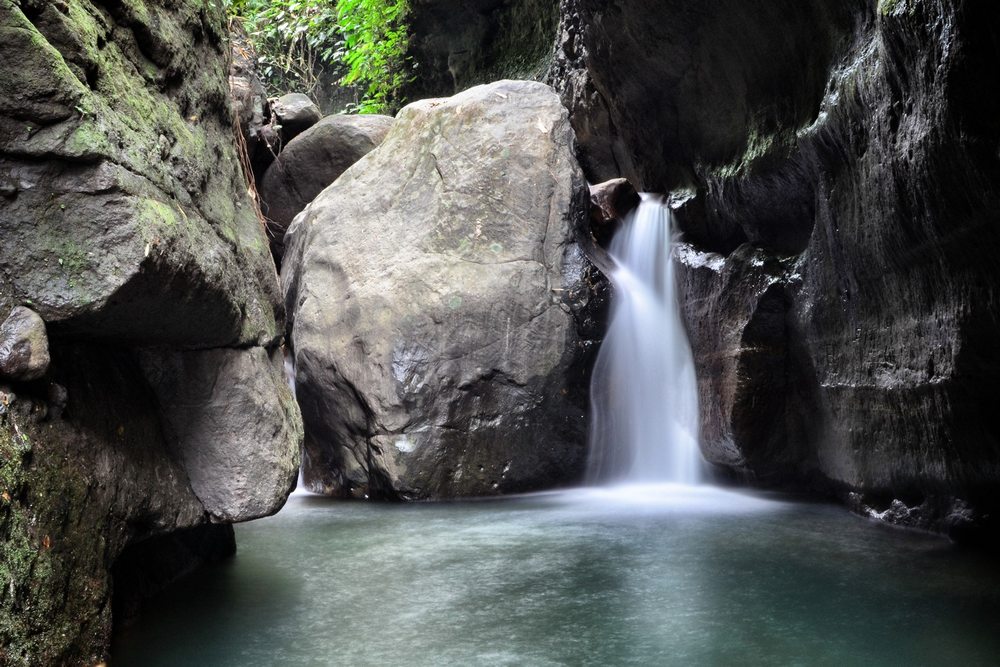
After visitors have reached Haduan Falls, they will be welcomed by a stunning view of cascading waterfalls, set against imposing hills and lush vegetation. The waterfall features several levels and pools for visitors to enjoy a swim, relax and soak in the beauty of nature in the region. The water is clear and cool and is perfect to take a refreshing dip following the long and strenuous hike.
All in all, Haduan Falls is a must-see destination for those who love nature and adventurers who wish to see the splendor of Tarlac’s natural marvels.
Here are some tips for how to get there:
- After you have reached the jumping-off point, you must register at the barangay hall . You can then employ a local guide to assist you in your journey. It is recommended that you employ a guide for your safety and also to find out more about the region.
- Start the hike by crossing the river, then walking through the lush forest, and then climbing up the steep slope. The path can be difficult So make sure you wear comfortable footwear and clothing suitable to hike in.
- Along the way, will see a number of tiny waterfalls. You are able to take the plunge and cool off or even take photographs. Your guide will guide you along on the path and you will find guides to guide you along the path.
- After approximately 2 hours of walking to the stunning Haduan Falls. The waterfall is a series of tiers and pools. You can relax or swim in the refreshing, cool water.

Reminder:
Make sure you bring water and food, wear comfortable footwear and clothes and carry clothing changes if you are planning to take a dip. Also, ensure that you adhere to the safety and guidelines rules set by municipal authorities in order to guarantee your safety and enjoyable excursion towards Haduan Falls.
Written by: Harold Pingol

